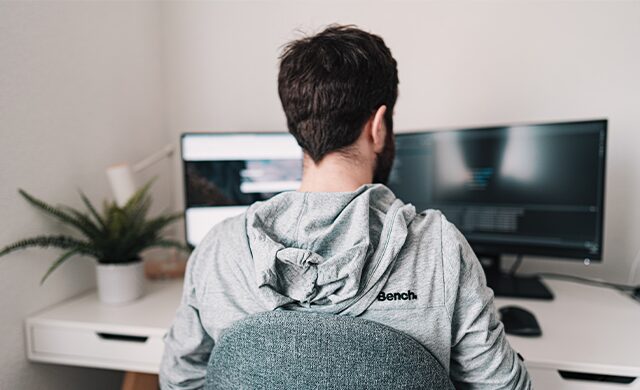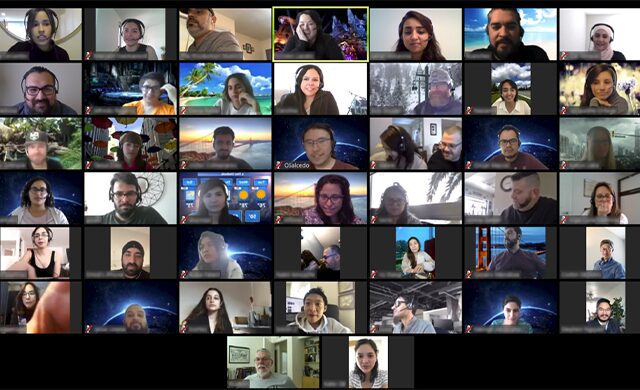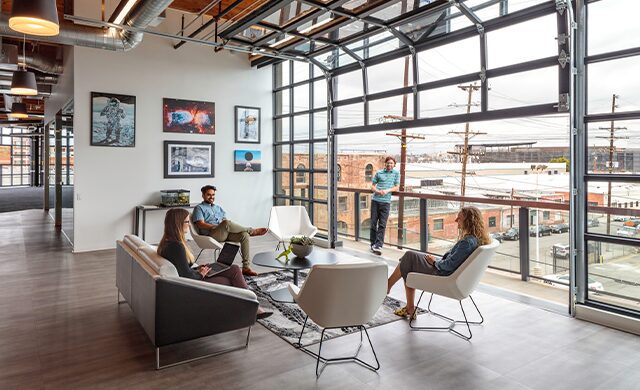Written by Cynthia Milota, director of workplace strategy at Ware Malcomb, and Dr. Sally Augustin of Design with Science
As unprecedented disruption and change ripple across the business landscape due to the global COVID-19 pandemic, what are the affects on the future state of workplace? Now that employees are improvising at home, settled in for an unknown time period, employers are contemplating what’s next. There is much speculation on what the post-COVID workplaces will look like, when and how employees will be asked to return, how workplaces will be operated, cleaned, managed, and what new protocols will be instituted.
COVID-19 tactical applications on returning to the workplace
Employees will be returning to the office in phases, with increased safety protocols for building entry to housekeeping. Transparent communications will continue. Social distancing may require modifying the capacity of workstation areas and conference rooms. Food service spaces will go pre-packaged and cashless, as health and safety underpin every decision.
Employee behavior and organizational outcomes
It is the investigation of the human side of employees working from home during this COVID-19 crisis that particularly intrigued the Ware Malcomb Workplace Strategy team. Since people are a company’s most important asset, how are they adapting and coping in this massive forced social experiment?
Rather than speculate, we invited a dozen clients to explore how their employees are maintaining social connections, how employee engagement is fairing and implications for the return to the office. The Ware Malcomb Workplace Strategy team worked with environmental psychologist Dr. Sally Augustin to conduct structured interviews with select clients. The goal was to examine human behaviors while working from home and to speculate on the implications of the data collected for the return to the workplace.
Grounded in applied psychology, this study explored the implications of the work from home period on employee behavior and organizational outcomes. The three fundamental human needs identified by self-determination theory include competence, autonomy, and relatedness. (Competence is being skilled at what one does, autonomy is being in control of one’s actions, and relatedness is the feeling of social connectedness.)
Prior to COVID-19, working from home was ostensibly not allowed in nine of the 11 organizations that were interviewed. Yet, during the shelter-in-place period, approximately 89 percent of the employees from these organizations were working from home.
Trust
The applied psychology research is clear—trust between colleagues and the organization that employs them is crucial to achieving corporate performance goals. In the groups we spoke with, there was ample trust among employees working from home. The work is somehow getting done despite the fact that middle managers are not able to electronically look over their employees shoulders. The paradigm of “If I cannot see them, they are not working” is being shattered. This is trust in action. Employees remain intentional and present. They feel motivated and empowered to do a good job and they anticipate new opportunities for alternative work when the COVID crisis is over.
There is a new sense of transparency in the massive amount of communications across multiple channels. Levels of communications include: 1) organization to employees on personal, mental, financial, and company health; 2) team-to-team; and 3) manager-to-employee.
Corporate communications are broadcast often weekly and sometimes daily from the companies we interviewed. All anticipate that this increased level of trust building communications will continue until people are back at the office.

Psychological wellness
The first week of working from home, many logged in while still in their PJs. But that quickly gave way to shaving, blow drying, and makeup. People crave personal connections professionally and personally. Zoom, Teams, text, and phone calls dominated the technology of choice for people to connect. The first week’s virtual happy hours are giving way to virtual book clubs, cooking demonstrations, and live stream concerts. There is the desire for more content and meaning in these virtual links. While everyone was ready to go back to work after the first week, people are generally making the best of their situation.

Positive resilience
Employees learned to work remotely in different ways, each evolving their work style over time. Extraordinary individual and team contributions during this crisis are being recognized by measures culturally appropriate for each organization.
Work/life integration was reported to have a flip side, as employees reported enjoying dinner times with the family, but then returning to work after the kids were in bed. Additional positive wellness benefits included walks at lunch and healthier eating.

Team approach
Teams and their managers are more intentional about touchpoints and are organically breaking down corporate silos. There’s a strong measure of organizational bonding when the CEO is broadcasting the daily report from their kitchen creating a more intimate connection with their teams. Augustin noted that the COVID-19 pandemic may tighten some bonds between employees who feel united in an important endeavor—survival.
Patience and the softer side
The work-from-home picture is not completely rosy, with kids and pets in the background, technology challenges, or a view of dirty laundry baskets from your camera. The need to apologize or try to hide the mayhem happening in the background has diminished. Patience is requested and granted. People genuinely care and seem more willing to cut someone slack at this time. This shared experience is building new levels of bonding and cooperation.
When we finally return
Returning to a certifiably clean workplace was the most important factor in the eventual return to the office. Health and hygiene will be paramount, with employees asking how they can be certain that the workplace is adequately cleaned and what protocols will be in place to assure that they will not be exposed to the virus in the future. New procedures for allowing visitor, vendors, and contractors to enter workplaces will be demanded. Tech and desk sharing practices will need to be revamped along with work and collaboration seat densities. Interior air quality monitoring will take on new importance. While the return to the office will likely occur in phases, using technology infrastructure systems to allow access, employees will be emboldened to push back on returning until they feel it is safe to do so. Trust will be as important for an effective return to the workplace as it has been to organizational survival during this work-from-home period.
Will this unintended work-from-home experiment yield any corporate real estate savings? Most of the clients in this study did not see it as a revolution, but even a few percentage points will impact the balance sheet. It appears as if employees will be moved back into the office in waves, before some number of them are potentially re-released to return to work from home in the future. No companies in this study intended to have employees work entirely remote, with most suggesting a one-to-three day per week timeframe. Intricacies of seat-sharing or unassigned desking will impact the square footage requirements, but all roads lead to some eventual savings.

Taste of freedom and flexibility
These past few weeks have shown that it is possible to have almost all corporate roles function outside the office. How optimized or efficient those roles are and the impact on the business has yet to be determined. Employees have been given an extraordinary amount of control over the way they work. Humans flourish when they have some control over their workplace experiences, but repercussions of this autonomy will be an open question to investigate when employees return to the office.
For more COVID-19-related news from HD, click here.



